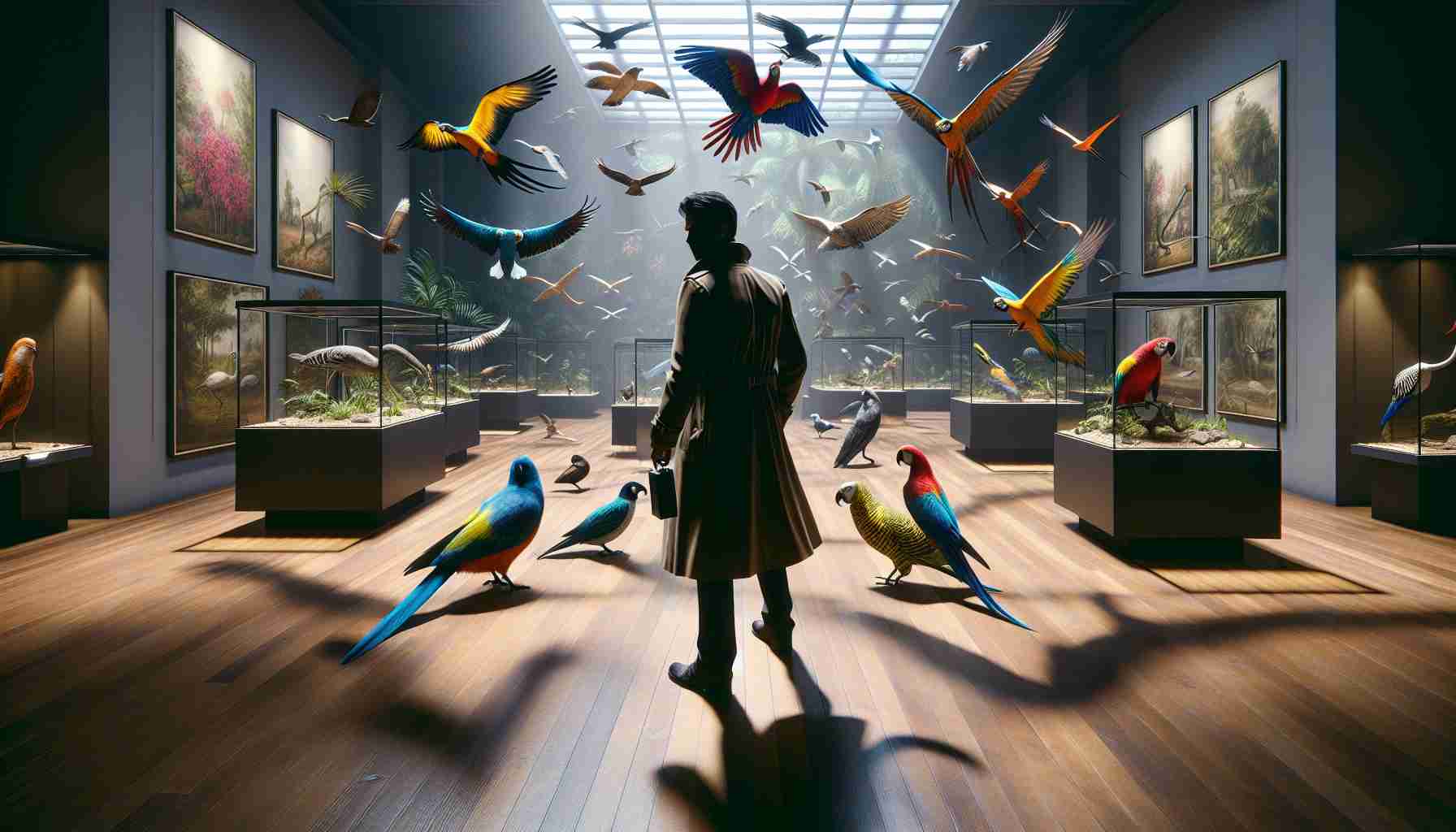- The “Birds of America” exhibition at the Houston Museum of Natural Science will feature 46 hand-colored prints by John James Audubon.
- Audubon’s collection is known for its life-sized, dynamic depictions of birds, showcasing North America’s diverse avian life.
- Audubon’s work is both celebrated for its artistry and scrutinized for his personal history, including ties to slavery and the abolitionist movement.
- The exhibition explores Audubon’s complex legacy, including debates over his scientific credibility and alleged species fabrication.
- Visitors are encouraged to appreciate the art while contemplating the intricacies of Audubon’s character and contributions.
Step through the doors of the Houston Museum of Natural Science next month, and you’ll find yourself transported into the vivid world of Birds of America. This stunning exhibition is set to captivate visitors with 46 exquisite prints from the archives of National Museums Scotland, each painstakingly hand-colored by the legendary John James Audubon. Published between 1827 and 1838, the full collection showcases 435 illustrations, each bursting with life and detail, offering a rare glimpse of North America’s avian wonders.
Audubon’s work stands apart with its animated and dramatic depictions, a significant departure from his predecessors. He painstakingly rendered birds life-sized, compelling even larger species to contort into captivating, albeit unnatural, positions to fit the massive pages—nearly a meter long each. His illustrations breathed realism, echoing the dynamic poses he studied in their natural habitats.
Yet, beyond the vibrant feathers and elegant lines lies a more contentious narrative. The exhibition peels back the layers of Audubon’s legacy, revealing a complex tapestry of brilliance and controversy. While his artistry immortalized the beauty of these creatures, Audubon’s life was marred by his troubling past. His entanglement with slavery and opposition to the abolitionist movement cast a shadow over his celebrated achievements.
Moreover, claims of fabricated species and identification errors fuel a discourse on his scientific credibility. As visitors explore the gallery, they will engage with these dual narratives—Audubon, both artist and enigma.
Prepare to witness the splendor and complexity of the natural world and its chroniclers. This exhibition invites you to admire the art while reflecting on the artist’s multifaceted legacy.
The Untold Stories Behind ‘Birds of America’: John James Audubon’s Controversial Legacy
Stepping through the doors of the Houston Museum of Natural Science, visitors are greeted by the lively and breathtaking world of “Birds of America.” This captivating exhibition presents 46 exquisite prints from National Museums Scotland, meticulously hand-colored by the famed John James Audubon. His complete collection, produced between 1827 and 1838, includes 435 illustrations capturing the vibrant tapestry of North America’s birdlife.
Unraveling Audubon’s Techniques and Legacy
Life-Sized Illustrations:
Audubon’s unique approach involved depicting birds in life-size format, demanding that even the largest birds be artfully squeezed onto pages nearly a meter in length. This technique contributed to the lively and realistic portrayal that set his work apart from previous ornithological illustrations.
Dramatic Poses:
His illustrations are noted for their dramatic compositions, a result of studying birds in the wild. This effort brought an unprecedented level of dynamism and vitality to his work, marking a shift toward more realistic and engaging depictions of avian life.
Controversial Aspects:
Personal Life and Controversies:
Despite Audubon’s celebrated artwork, his life is not without blemish. He was known for his entanglement in the slave trade and his opposition to the abolitionist movement, aspects of his life that have sparked considerable debate.
Scientific Credibility:
There have been allegations and ongoing discussions about Audubon’s scientific integrity, with claims that some species were fabricated or inaccurately identified, calling into question certain aspects of his work.
Exploring Dual Narratives
Visitors to the museum are encouraged to ponder these dual narratives—appreciating Audubon’s artistic genius while contemplating the moral and ethical complexities of his character and scientific contributions.
Additional Insights and Developments:
– Audubon’s Background: Born in Haiti in 1785, Audubon had a tumultuous life, which influenced his work and personal convictions.
– Modern Controversy: Recent discussions focus on reassessing historical figures in light of contemporary values, with Audubon being a key figure in these debates.
Important Related Questions:
What makes Audubon’s ‘Birds of America’ so significant?
“Birds of America” stands out due to its ambitious scale, life-sized bird depictions, and stunning detail, which set new standards for ornithological illustration in the 19th century.
How has Audubon’s legacy been reassessed in recent years?
Contemporary discussions emphasize the need to consider both his artistic contributions and personal controversies, acknowledging his role in science while critiquing his involvement in problematic historical activities.
How did Audubon influence later naturalists?
Audubon’s emphasis on realism and nature laid the groundwork for subsequent generations of naturalists and illustrators, inspiring a closer alignment of art with scientific observation.
Suggested Related Links
For more information on the Houston Museum of Natural Science exhibitions and Audubon’s work:
– Houston Museum of Natural Science
– National Museums Scotland
